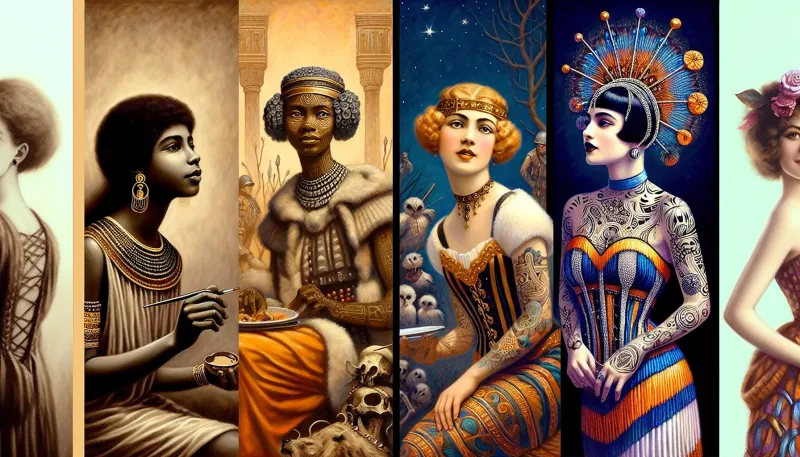The Evolution of Beauty Standards and Body Modification Trends: A Historical Perspective

Explore the fascinating history of beauty standards and body modification trends. Understand how perceptions of beauty have evolved and the cultural implications of body modifications.
Beauty standards and body modification trends have varied significantly across different cultures and epochs. This evolutionary journey reflects not only aesthetic preferences but also social, economic, and political influences. In this article, we delve into the history of these ever-changing ideals and explore how perceptions of beauty have been shaped over time.
Ancient Beauty Standards and Practices
Egyptian Elegance
Ancient Egypt, known for its architectural grandeur, also set high standards for beauty. Both men and women indulged in cosmetics and skincare rituals using natural ingredients like honey and oils. They accentuated their eyes with kohl to ward off evil and the harsh sun. Intricate hairstyles and elaborate jewelry were symbols of social status.
Greek Ideals
The Greeks celebrated the human form, encapsulating their beauty standards in art and literature. The ideal Greek body was muscular and well-proportioned, symbolizing strength and virtue. Hairstyles were meticulously groomed, and pale skin was highly regarded as a mark of purity and nobility.
Chinese Dynasties
Beauty in ancient China was characterized by a harmonious blend of features. During different dynasties, such as the Tang and Han, beauty standards included slender physiques, delicate facial features, and lotus feet achieved through the painful practice of foot binding. Silk garments and jade accessories were also integral to the aesthetic.
Medieval and Renaissance Beauty Trends
Medieval Modesty
The medieval period in Europe saw a shift towards modesty and religious influence. Pale skin was again a coveted trait, achieved through the use of lead-based cosmetics. Women often plucked their hair to create high foreheads, considered a sign of intelligence and nobility.
Renaissance Realism
The Renaissance period was marked by a return to the appreciation of natural beauty and humanism. Artists like Leonardo da Vinci and Michelangelo celebrated the human form in its most natural state. Rubenesque figures, characterized by fuller bodies, were a sign of wealth and fertility during this era.
Modern Beauty Standards and Body Modifications
20th Century Transformations
The 20th century brought rapid changes to beauty standards, influenced by media and Hollywood. The 1920s flapper era popularized bobbed haircuts and slender figures. The mid-century saw the rise of curvaceous icons like Marilyn Monroe, while the 1960s' waif-like figures, epitomized by models like Twiggy, became the new ideal.
Body Modification Trends
Body modifications such as tattoos, piercings, and cosmetic surgery have become increasingly mainstream. Originally associated with subcultures, tattoos now symbolize personal expression and artistry. Cosmetic procedures like rhinoplasty, liposuction, and breast augmentation have soared in popularity, reflecting a societal obsession with youth and perfection.
21st Century and the Future of Beauty Standards
Digital Influence and Diversity
In the 21st century, social media has become a powerful driving force behind beauty trends. Apps like Instagram and TikTok can make beauty trends viral overnight. There is also a growing movement towards body positivity and diversity, challenging traditional beauty standards and embracing different body types, skin colors, and genders.
Technological Advancements
The advancement of technology continues to redefine beauty and body modifications. Non-invasive procedures like laser therapy, dermal fillers, and botox offer quick and relatively painless enhancements. Virtual and augmented reality may soon allow individuals to experiment with their appearance in digital spaces before committing to permanent changes.
Conclusion
The evolution of beauty standards and body modification trends is a testament to the dynamic nature of human culture. From ancient ritualistic practices to modern digital trends, our perceptions of beauty are continually being influenced and redefined. As society progresses, the future of beauty will likely lean towards inclusivity and personal expression, celebrating the uniqueness of every individual.



























